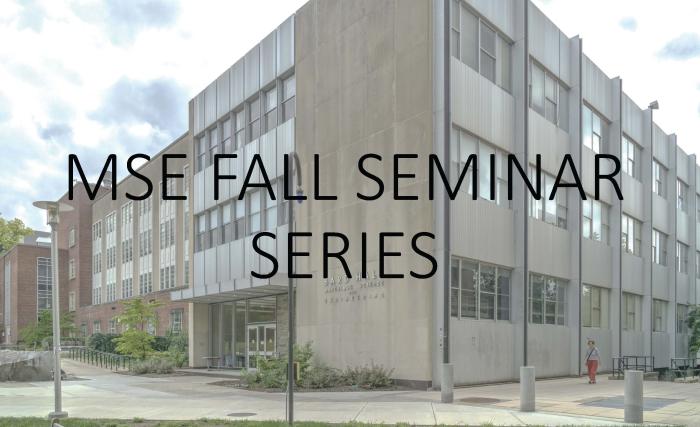
MSE Fall Seminar Series 2022: Speaker Professor Ian Robinson
Location
Kimball B11
Description
Coherent Diffraction Investigation of Nanostructure in Ferroelectric Materials
Ian Robinson
London Centre for Nanotechnology, University College, London
and Brookhaven National Laboratory
Abstract: Along the way to develop lead-free dielectric materials, it was discovered that nanoparticles of Barium Titanate performed three times better than macroscopic materials in supercapacitors.
This spiked a flurry of interest to discover how the material worked. Here we show that the answer to this question lies in the nature of the "microstrain" defined by the classical Williamson-Hall analysis of neutron or X-ray powder diffraction data. While classical XRD shows the material is cubic, X-ray pair distribution function measurements clearly show the local structure is lower symmetry than cubic. This apparent inconsistency is resolved by examining 3D Bragg coherent diffraction images of selected nanocrystals, which show the existence of ~50 nm-sized domains, interpreted as tetragonal twins, which cause the average crystalline structure to appear cubic [1]. The ability of these twin boundaries to migrate under the influence of electric fields explains the dielectric anomaly for the nanocrystalline phase. This talk will explain how X-ray coherence is used for imaging and how this could be a routine complement to powder diffraction measurements.
[1] "Structural investigation of the metastability of barium titanate nanoparticles grown under hydrothermal conditions", Ana F. Suzana, Sizhan Liu, Jiecheng Diao, Longlong Wu, Tadesse A.
Assefa, Ross Harder, Wonsuk Cha, and Ian K. Robinson, under review (2022)
Biography: Ian Robinson is a group leader in the Condensed Matter Physics
and Materials Science Department at Brookhaven National
Laboratory and professor at the London Centre for
Nanotechnology, University College. His research is currently
focussed on the development of coherent X-ray diffraction
methods for imagige the structure of nanoparticles. His
research makes extensive use of synchrotron radiation and Free-
ELectron Lasers. He built a beamline at Brookhaven to develop
Surface X-ray Diffraction and a second one at Argonne for
Coherent X-ray Diffraction. One outcome of the work was the
discovery of Crystal Truncation Rods, for which he was awarded
the Surface Structure Prize in 2011 and the Gregori Aminoff
Prize in 2015.
Ian Robinson‘s research in ptychography was based in the Research Complex at Harwell where he led a group to develop phase modulation technology for X-ray imaging. He also held a Diamond Professorial Fellowship for imaging chromosomes by coherent X-ray diffraction. He built a beamline at National Synchrotron Light Source (Brookhaven) to develop Surface X-ray Diffraction and a second one at the Advanced Photon Source (Argonne) for Coherent X-ray Diffraction. He is recognized for his discovery of Crystal Truncation Rods by the award of the ACA Warren Prize and the Surface Structure Prize, and for the development of Bragg Coherent Diffractive Imaging by the award of the Gregori Aminoff Prize in 2015.

